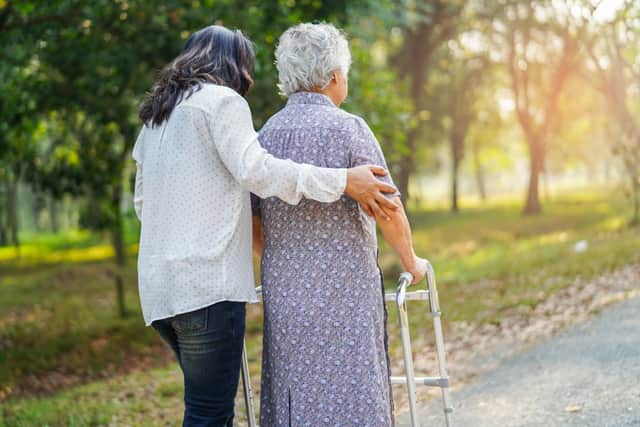Census 2021: the part of Greater Manchester with the oldest population
and live on Freeview channel 276
Data from the 2021 Census has shown how the population of Greater Manchester has continued to age, with every borough in the city-region having more residents in older age groups. The figures, analysed by the data team at our sister title NationalWorld, show that the 10 local authorities in Greater Manchester had more over-65s living there when last year’s survey was done than was the case when the previous Census was taken in 2011.
There were also more over-90s living in seven of the 10 boroughs in 2021 compared to 10 years previously, and more centenarians in eight of the 10 local authorities.
What does the data show for Greater Manchester?
Advertisement
Hide AdAdvertisement
Hide AdThe data, taken from the 2021 Census, shows that Greater Manchester is mirroring a national trend showing that the population of England and Wales is continuing to get older.
All of the 10 boroughs in the city-region had more over-65s living in them when the Census was taken last year than was the case when the previous national survey was done a decade previously. In Stockport the census found that more than one in five of the population is now of retirement age, with 59,275 people aged 65 or over living there.


The one borough which did not completely follow the trend was Salford. While there were more over-65s recorded in the 2021 Census than in the 2011 one (35,922 and 33,206 respectively) the proportion of the population they make up in the two surveys is different. In the 2011 Census over-65s made up of 14.2% of the population of Salford, whereas by 2021 the percentage for that age group had dropped to 13.3%.
In addition seven of the 10 boroughs had more over-90s living there in the last Census than the previous one, with Manchester, Salford and Oldham the exceptions. And eight of the 10 local authorities had more residents who were 100 or over, with the number of centenarians decreasing in Tameside and staying exactly the same in Rochdale.
What does the data show nationally?
Advertisement
Hide AdAdvertisement
Hide AdThe data showed that across England and Wales more than 11 million people – 18.6% of the population – were aged 65 or older when the 2021 census was taken, compared with 16.4% in the previous census a decade before. This included more than half a million (527,900) people aged 90 or more. The average (median) age in England and Wales rose from 39 years in 2011 to 40 years in 2021, reflecting the changing age structure of the population.
Angele Storey, head of the Office for National Statistics (ONS) Ageing Analysis team, said: “While living longer is something to be celebrated and our ageing population presents opportunities, it also has implications for the economy, services and society. Knowing the size and structure of the population is fundamental for decision makers and policy makers in the UK.
“The 2021 Census results will give further insight into the implications of an ageing population and the lives of older people when the more detailed multivariate data are published in 2023.”
The Centre for Ageing Better was launched in 2015. Dr Aideen Young, senior evidence manager at the centre, highlighted some of the challenges facing older people.
Advertisement
Hide AdAdvertisement
Hide AdShe said: “Older people are a highly diverse group in terms of health and wealth, and within that group there are people very much in need – who are living in poverty, in poor housing and in poor health. Their precarious situation has been exacerbated by the cost of living crisis. They are the people that we really need to pay attention to.
“We have the oldest housing stock in Europe so there are many people living in non-decent and inappropriate homes. These homes are simply not suitable for people who are older or who have disabilities.”
